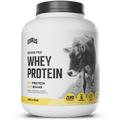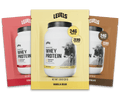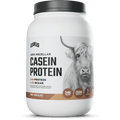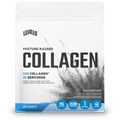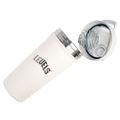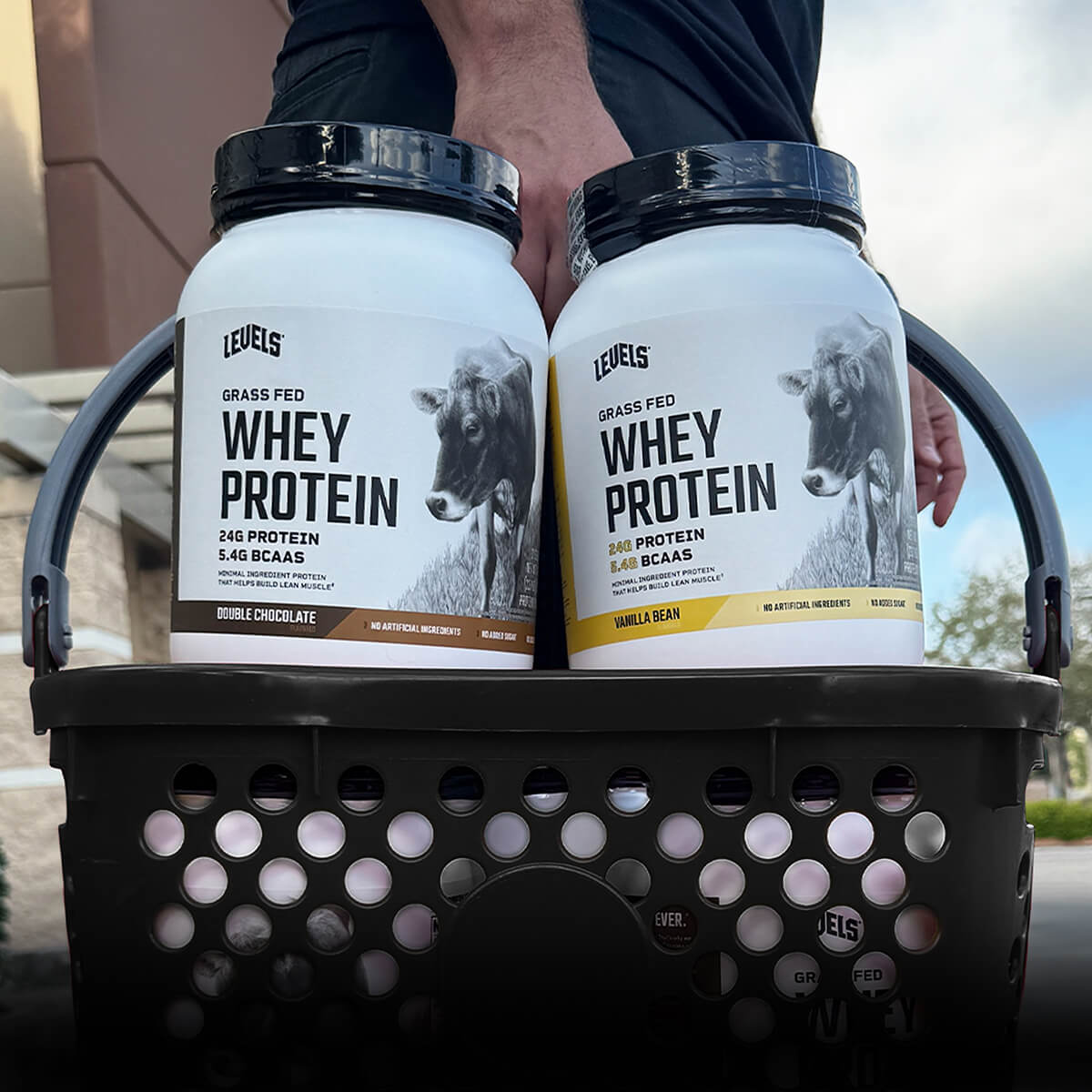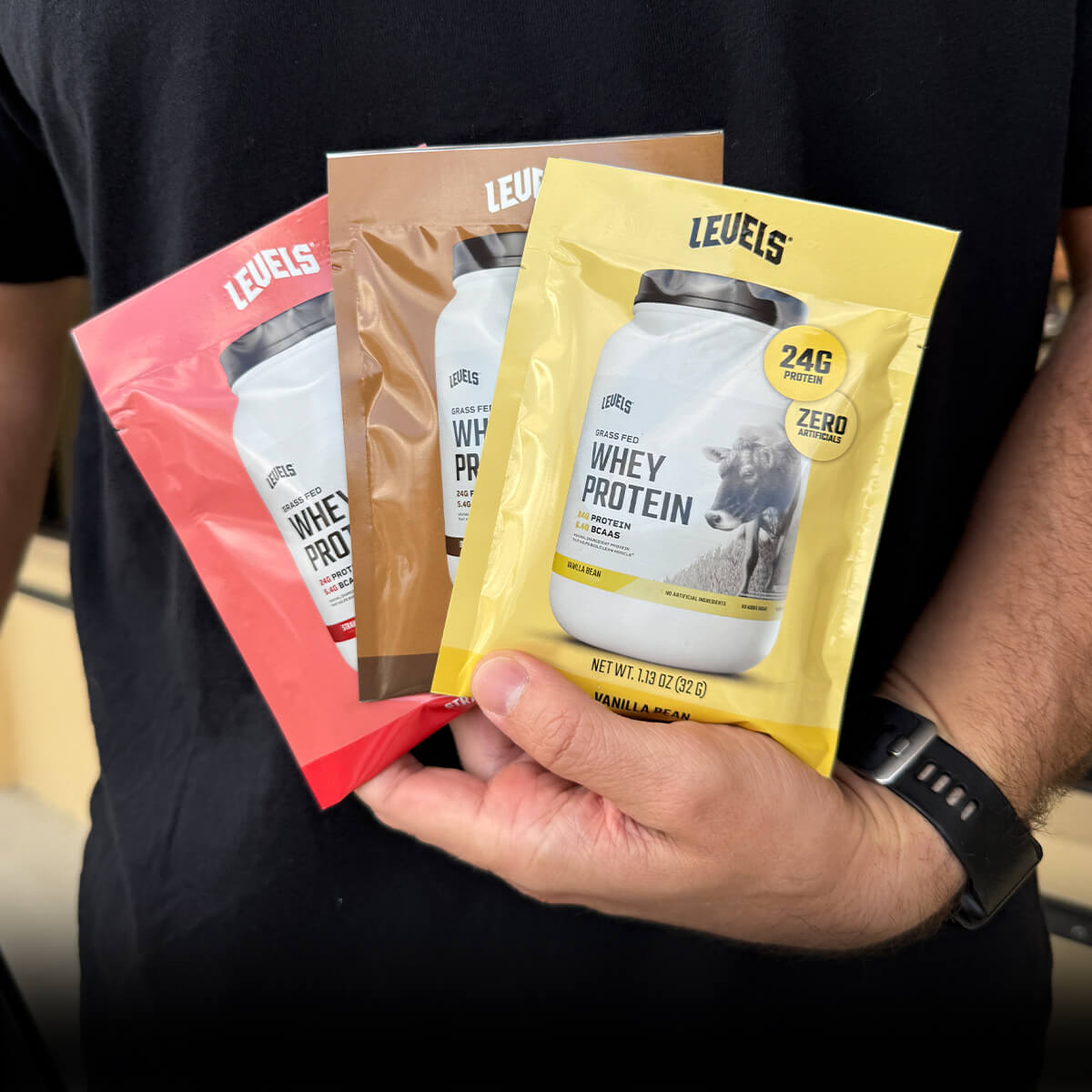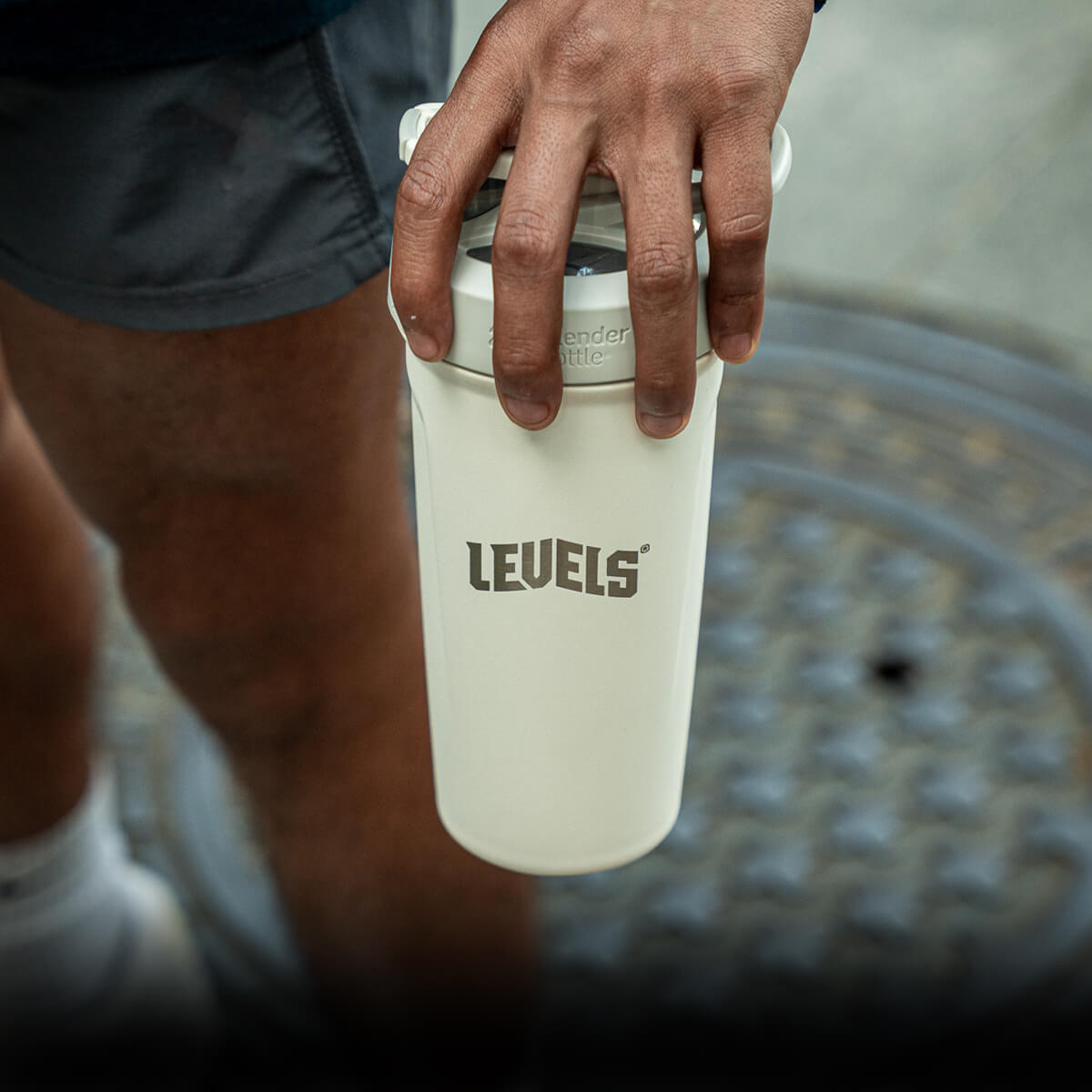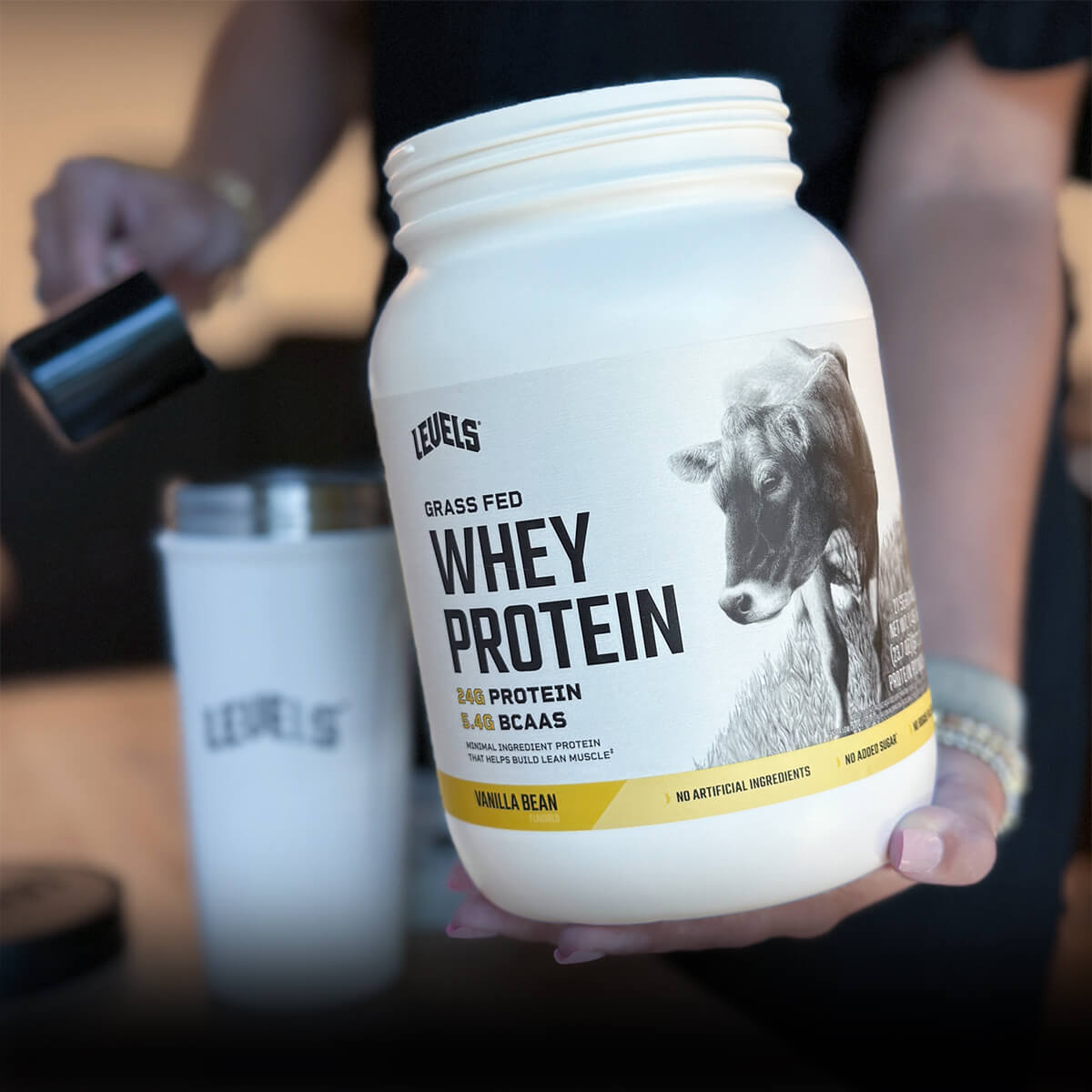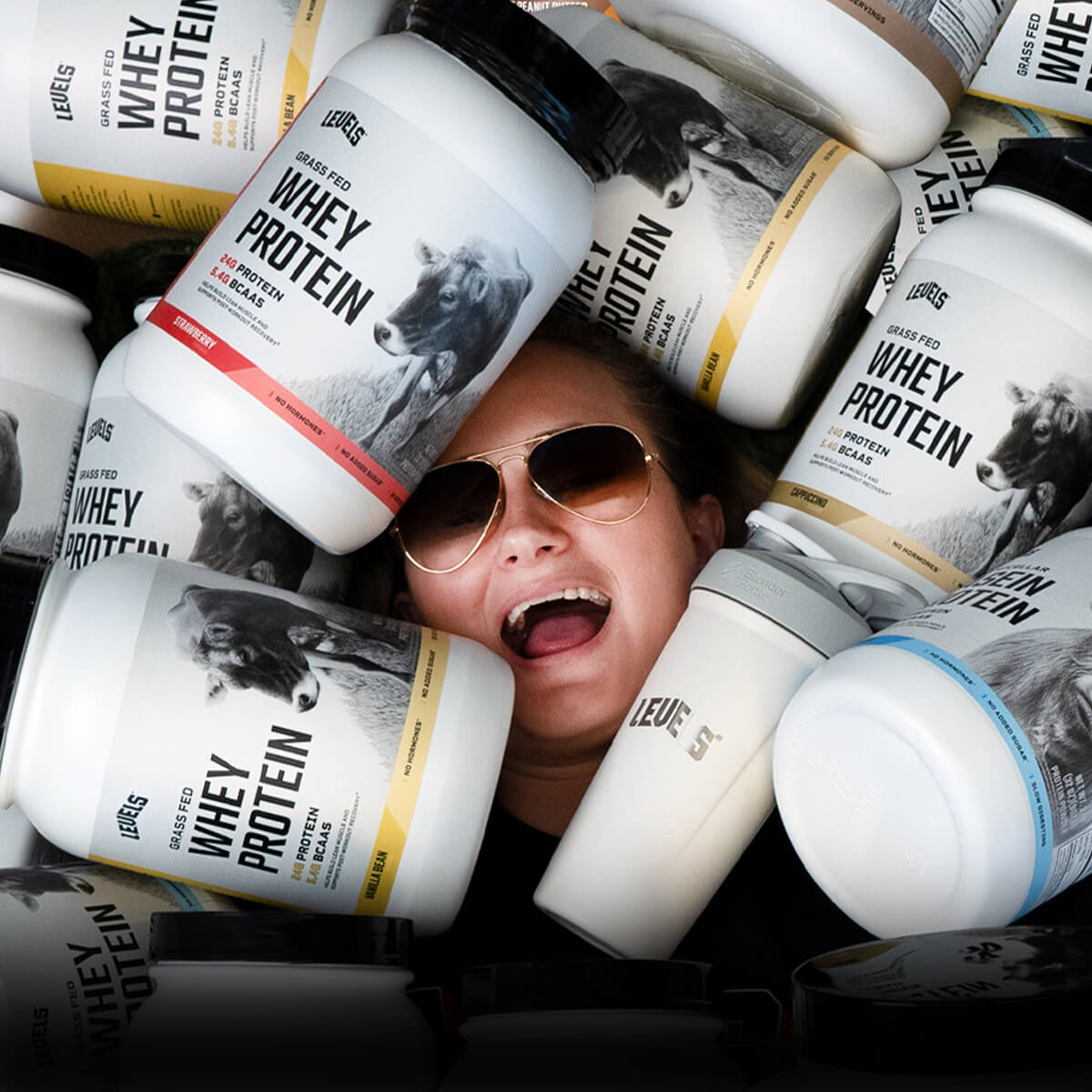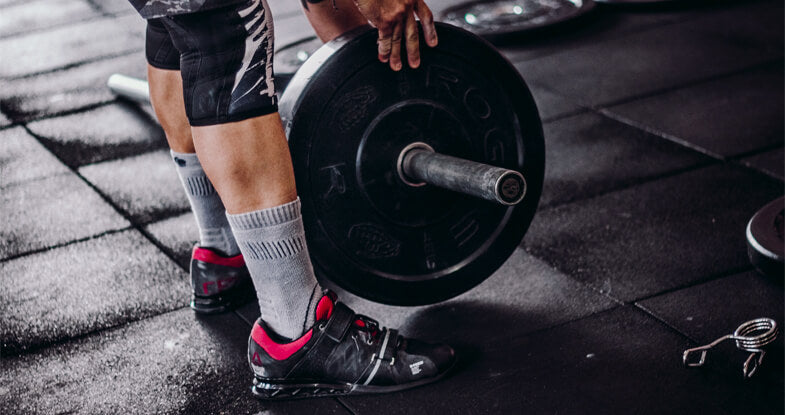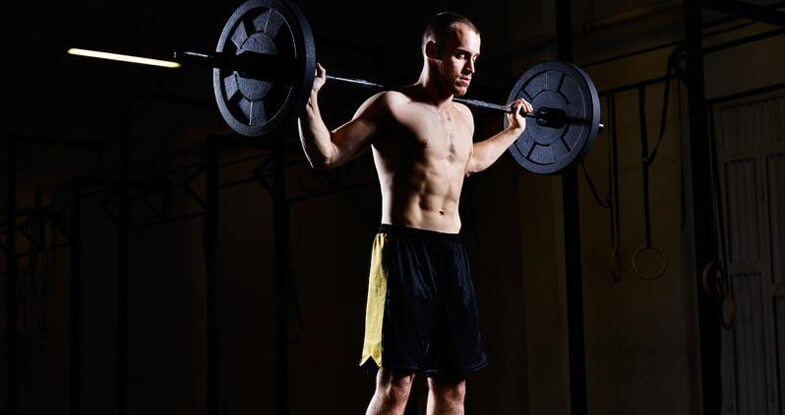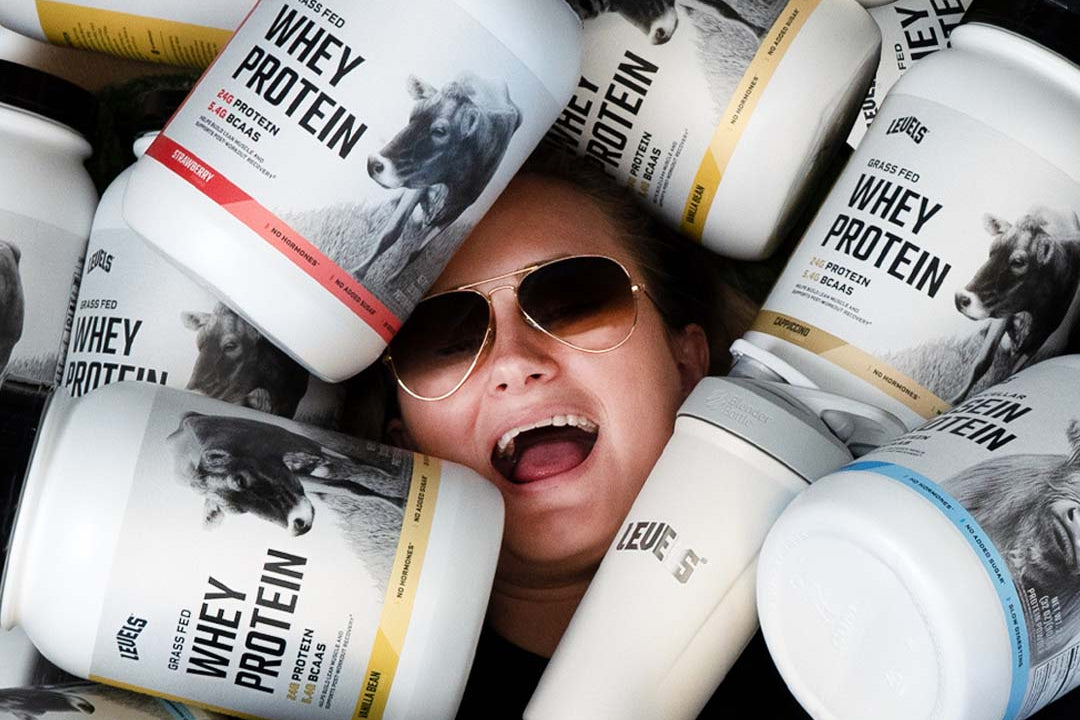Confused about when to use high reps or low reps? You aren't alone.
The dilemma is that focusing on the wrong rep range for your goals is at best inefficient, and at worst a waste of time and effort.
Therefore, if you want the fastest progress and best results, you need to dial in your workouts ASAP.
Keep reading to learn research-backed recommendations for when to use high reps versus low reps for goals like fat loss, muscle mass, and strength, plus practical takeaways for your training regimen.
Should You Use High Reps or Low Reps for Weight Loss?
Weight training is an excellent way to shed fat faster, maintain a healthy metabolism, and keep your hard-earned muscle during fat loss[*][*][*].
One way weight training helps you burn fat is by boosting your metabolism for up to 3 days after each exercise session.
But does it matter whether you use high or low reps to get the job done?
According to a 2011 study in overweight adults, a full-body resistance training session with just one set per exercise was equally effective at raising calorie burn for 72 hours compared to three sets per exercise[*]. Both workouts increased energy expenditure by about 5%.
In other words, using a single set per exercise as opposed to 3 worked just as well to boost metabolism.

And a 2013 study from the Journal of Strength and Conditioning found that for men, doubling the total volume of weight lifted per workout from 10,000 kilograms to 20,000 kilograms didn’t increase EPOC (a measure of the calories your body burns during the recovery period following exercise) any further[*].
Although performing more reps does burn some extra calories per session, you can also use less-taxing forms of exercise, such as cardio or walking, to up your overall calorie burn.
Therefore, while lifting weights helps you burn more fat and boosts your metabolism, low overall volume and reps are sufficient. So unless you love weight training enough to do the extra work, don’t worry about high-volume training.
And as you’ll learn in a moment, relatively low rep ranges (reps per set) and heavy weights offer a unique advantage compared to high reps with less weight.
Why You Should Lift Heavy During Fat Loss
Diet, fasting, and cardio can all help you burn more fat and expend more calories, but resistance exercise has the unique ability to help you retain muscle.
That’s why at Levels, we believe that the most valuable contribution of weight training during fat loss is to preserve lean muscle mass.
And here’s why you should lift heavy: the size principle states that lifting heavily or lifting explosively recruits all your muscle fibers — fast-twitch as well as slow-twitch[*].
Conversely, sets with low weights and high reps primarily recruit slow-twitch endurance fibers, making them less effective for stimulating (and preserving) explosive fast-twitch fibers[*].
As a result, using heavier weights (which requires lower reps) is likely more effective for stimulating and preserving your muscle mass during fat loss.
Subscribe to get the latest advice, sales, discounts, product drops and more. Join now and get 15% off your first order.
Practical Advice for Weight Training During Fat Loss
For better weight loss results, lift weights at least twice per week, focusing primarily on compound lifts. You can get great results with as little as one set per exercise.
The studies we discussed above all used the 8-12 rep range. However, we recommend you include some heavier sets with 5-8 reps, too.
And if you usually strength train in the 1-4 rep range, by all means, keep doing so during fat loss.
Lifting heavy is the best way to preserve muscle mass during fat loss, so whichever rep ranges you choose, don’t be shy about adding plates to the bar.
Also, ladies listen up: if you prefer to tone up with light dumbbells, or you’re worried about accidentally bulking up by lifting heavy, don’t sweat it.
While some women are concerned about adding unwanted size, lifting heavy is extremely unlikely to make you look like a bodybuilder — and it’s the most effective way to keep your curves as you melt the fat off.

High Reps vs. Low Reps for Muscle Mass
According to a 2018 review from Frontiers in Physiology, high reps and low reps appear to be equally effective for getting bigger[*].
The review compared lower-rep sets with over 60% of 1 rep max (1RM) to higher-rep sets <60% of 1RM taken to temporary muscular failure. And it found that increases in muscle size were similar for both methods.
However, don’t assume that high and low reps are interchangeable. Also, spoiler alert: if you want to add a lot of muscle mass, be prepared to use both.
According to research, heavier weights with fewer reps primarily increase the size of fast-twitch (explosive) muscle fibers[*]. In contrast, lighter weights with more reps mainly increase the size of slow-twitch (endurance) muscle fibers[*].
Therefore, the chances are good that someone who lifts with both high and low reps will gain more muscle over time, for a few reasons.
First of all, because changing your lifting program is the best way to overcome plateaus. If you use high reps or low reps exclusively to gain muscle mass, you’ll plateau with nowhere to go.
Secondly, incorporating both high and low reps into your plan maximizes the growth of slow-twitch as well as fast-twitch fibers.
And because fast-twitch muscle fibers are what make you strong and explosive, if you want to be big and strong — not just big — you’ll definitely want to lift heavy.
Practical Advice for Weight Training for Muscle Mass
Sets with 1-4 reps increase your strength by changing your nervous system, and they’re also effective for getting bigger[*]. These low-rep sets induce mechanical stress on muscles by maximizing force production, thus breaking down fast-twitch fibers as well as slow-twitch fibers.
Heavy, low-rep compound exercises are best early in your workout, right after your warmup, before you get fatigued.
If you’re stuck and can’t seem to get bigger, try adding some low-rep sets at the beginning of each workout to get stronger. The increased motor unit recruitment from lifting heavy may be just the trick to jumpstart your muscle growth.
And higher-rep sets with 5-12 reps, or 13-25+ reps, work on a different principle: the higher the rep count, the greater the time under tension, and the more the set breaks down slow-twitch muscle fibers and causes metabolic stress favorable to muscle growth[*].
Super-high-rep sets with 25 or more reps are less useful for breaking down muscle fibers. However, the “pump” (blood-flow) you receive from very high-rep sets can increase delivery of nutrients — such as BCAAs or whey protein — to muscles, further enhancing your results[*].
Additionally, the best time to “chase the pump” is at the end of your workout. It’s tiring, but it doesn’t take much strength, so you should get the hard work out of the way before you perform ultra-high-rep sets.
Essentially, if you want to get bigger, focus on all of the above rep ranges, and make sure you add weight to the bar in every rep range regularly.
Along with rep ranges, overall volume and exercise selection also make a huge difference in your muscle-building results. Don't miss How Many Exercises Per Muscle Group? The Definitive Guide.

High Reps or Low Reps for Strength?
The definition of physical strength is “the ability to exert force on physical objects using muscles.”
And the gold standard for measuring strength is the 1 rep max (1RM) test. In other words, the best way to measure strength is to gauge how much you can lift for a single repetition — safely and following a full warmup, of course.
But what training methods increase your 1 rep max?
According to a principle called SAID (Specific Adaptations to Imposed Demands), your body adapts to whatever training method you use.
Translation: to get better at lifting heavy objects, lift heavy objects.
In fact, achieving a high 1RM is the basis of the sport of powerlifting, and powerlifters spend plenty of training time on heavy singles, doubles, and triples (sets of 1, 2, and 3 reps).
However, they also lift in higher rep ranges: they use 5-12 rep sets to practice form with lighter weights, build speed and explosiveness, and get bigger.
And not only that, but plenty of powerlifters also use high-rep sets of 13-25+ reps for injury prevention, rehabilitation, or blood flow purposes.
The takeaway? You must lift heavy to get stronger, and that means using low reps. However, other rep ranges also have their uses, even if your primary goal is strength.
Practical Advice for Getting Stronger
Heavy, low-rep sets with low overall volume (fewer sets) increase your ability to lift heavy, but they won’t make you grow as much as performing more overall sets.
Therefore, if you want to get stronger without getting bigger, perform a total of 10-15 total reps per exercise using sets with 1-3 reps each.
On the other hand, if you want to get bigger as well as stronger, aim for 25 or more total reps using 1-5 reps per set.
Also, to get stronger, you not only need to lift heavy, but also use excellent form. Every time you perform a rep, you’re rehearsing a skill, so you need to bring a laser-like focus to all your movements in the gym.
The classic power lifts are the bench press, squat, and deadlift, but you can get stronger with any lift, as long as you lift heavy with good form.
But your best choices for strength exercises are compound, free weight movements, especially if you want “real world” strength as opposed to achieving the world’s strongest leg press or machine chest press.
Finally, don’t neglect other rep ranges. Even if you don’t want to grow, moderate- and high-rep sets are useful for increasing speed, building explosiveness, rehearsing form, enhancing recovery, and preventing injuries by ensuring your muscle groups stay balanced as you get stronger.

The Best Rep Ranges for Muscular Endurance
Muscular endurance is “the ability of a muscle or muscle group to sustain repeated contractions against resistance for an extended duration.”
And you can think of muscular endurance as the opposite end of the spectrum from maximal strength. Whereas max strength is expressed through your 1 rep max, muscular endurance is a question of how many reps you can perform with a relatively light weight.
Here are some common muscular endurance assessments:
- Maximum situps or curl-ups
- Maximum pushups
- Max reps on machine or free weight exercises with a percentage of bodyweight or 1RM (typically 50-65%)
But unlike building max strength by lifting heavy with low reps, building appropriate muscular endurance isn’t merely a matter of performing lots of reps.
For one thing, no sport is based solely on muscular endurance in the same way that powerlifting is based exclusively on strength.
Wrestlers, fighters, runners, cyclists, rock climbers, and firefighters all require muscular endurance, but they also need other attributes — including aerobic fitness, explosive strength, and sport-specific motor skills.
Therefore, no one trains solely for muscular endurance. Instead, people train for appropriate levels of muscular endurance, in balance with their other fitness qualities.
Practical Advice for Muscular Endurance
To build pure muscular endurance, use compound lifts with 20-100 reps[*].
Or better yet, train muscular endurance in a realistic way: think skipping rope, loaded carries, heavy bag work, or other “functional” movements that have a direct carryover to your real-world activities.
If you choose to train muscular endurance concurrently with other fitness qualities, incorporate it at the end of workouts. That way, your muscular endurance training won’t interfere with strength or aerobic training.
Also, research shows that your max strength levels influence muscular endurance, at least to a point[*].
Think about it — who could bench press 135 pounds for more reps: someone who spends their time benching 135 for reps, or someone with a max bench press of 405 who’s never trained specifically to bench 135 for reps?
As a result, even endurance athletes and other non-strength athletes can benefit from regular lower-rep training in the 1-4 and 5-12 rep ranges.
The Bottom Line
The decision to use high reps versus low reps isn’t exactly common sense, and that’s why plenty of people get it wrong.
For speeding up fat loss, low volume and low overall reps are equally effective compared to high volume training. But for preserving muscle during fat loss, relatively low reps and heavy weights are your best bet.
And while you can gain muscle mass with low reps or high reps, a blend of both is the smartest long-term approach to get bigger.
Although low reps and heavy weights are the only way to get truly strong, you can still benefit from including some moderate and high rep sets in your training, even if your primary goal is to increase your 1 rep max.
Finally, the best way to increase your muscular endurance is with high reps and low weights, but no one requires muscular endurance as their only fitness quality. Therefore, you’ll want to ensure you balance out muscular endurance with other fitness needs like aerobic fitness and sport-specific skills.
Overall, people tend to neglect low reps and heavy weights for a variety of reasons.
Therefore, no matter your goal, if you want to optimize your results, don’t forget to safely lift the heaviest weights you can, and focus on building strength over time.
